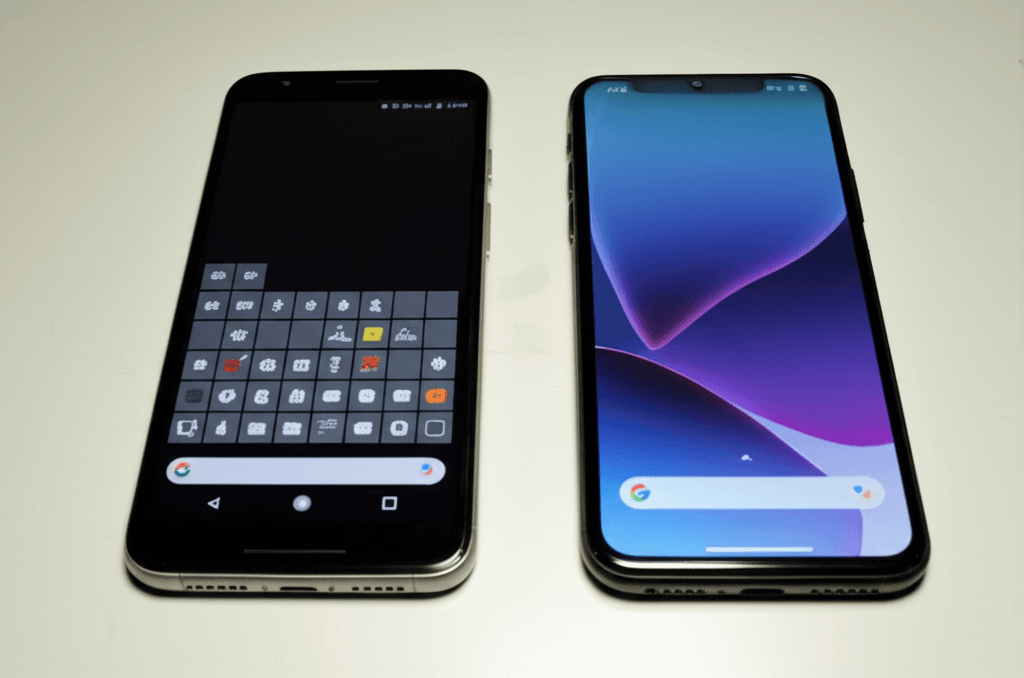In today’s rapidly advancing world of smartphones, the choice of a device often boils down to the little details that make a big difference in our daily usage. Among these, the keyboard, a fundamental tool for communication, holds a position of importance. While both the Google Pixel and Apple’s iPhone pack a ton of features that cater to diverse needs and preferences, the keyboard experience can significantly impact our interaction with these devices. Here’s why I find the Google Pixel’s default QWERTY keyboard layout to be superior to the iPhone’s keyboard in terms of usability, functionality, and user-friendliness.
**Enhanced Typing Comfort and Usability**
The first noticeable difference between the Google Pixel’s and iPhone’s keyboard lies in the key layout. The Pixel’s QWERTY keyboard design is slightly taller and narrower compared to the iPhone’s keyboard, which results in a more ergonomic typing experience. This is particularly advantageous for those with larger hands, as the vertical design reduces the distance that fingers must stretch to reach the outermost keys. Consequently, this promotes a more comfortable and natural typing posture, ultimately reducing the likelihood of strain-related issues during prolonged use.
In addition to the key layout, the Google Pixel’s keyboard features wider keys, offering increased stability and accuracy while typing quickly. In contrast, the more compact keys on the iPhone’s keyboard might lead to more frequent typos because the smaller size leaves less room for error.
**Smart Features for Enhanced Productivity**
Both Google Pixel and iPhone offer various smart features that streamline the typing process. However, Google Pixel’s QWERTY keyboard takes the cake in terms of customization options and personalization. For instance, users can adjust the keyboard size and position and access an extensive range of languages, keyboard themes, and even third-party keyboard apps. This level of customization empowers users to create a typing environment that suits their individual needs and tastes.
Moreover, Google Pixel’s QWERTY keyboard excels in predictive text capabilities, offering more accurate and contextually relevant suggestions compared to the iPhone’s keyboard. The implementation of Google’s powerful artificial intelligence algorithms helps achieve better word predictions and allows users to glide seamlessly through messages, emails, and notes with less effort and fewer keystrokes.
The Gboard app, which comes pre-installed on the Google Pixel series, packs myriad features to boost productivity. These include the ability to search the web, access GIFs and emojis, and use Google Translate directly from the keyboard. The Gboard also boasts Google Assistant integration, enabling users to search for information, dictate voice commands or requests, and perform other tasks hands-free.
**User-Centric Design and Interface**
The intuitive design of the Google Pixel’s default QWERTY keyboard focuses on user convenience. For instance, it supports the use of swipe gestures, allowing users to glide their finger along the keys to type words without lifting their finger off the keyboard. This not only saves time but also eliminates the need for traditional typing motions, further enhancing the overall speed and fluidity of writing.
On the other hand, the iPhone’s keyboard, while reliable and efficient, lacks many of the aforementioned features that its Google counterpart offers. It is relatively limited in terms of customization, relying on third-party keyboards for any customizations such as themes or key layouts. Moreover, the limited integration of AI technologies makes its predictive text capabilities somewhat less advanced, requiring users to rely more on manual typing.
**Conclusion**
In the world of smartphones, minor details can define the overall user experience. The keyboard, a fundamental aspect of communication on these devices, is no exception. In this context, the Google Pixel’s default QWERTY keyboard stands out as a better option due to its user-centric design, intuitive interface, customizable options, and superior predictive text capabilities. While the iPhone’s keyboard is dependable and functional, the Pixel keyboard offers more features and enhancements that cater to a wider range of user preferences, ultimately elevating the quality of the smartphone experience. Ultimately, the choice between the Google Pixel and the iPhone may depend on one’s desired functionality and customizability, and for those prioritizing an optimal keyboard experience, the Pixel could potentially edge out its rival.

Leave a Reply